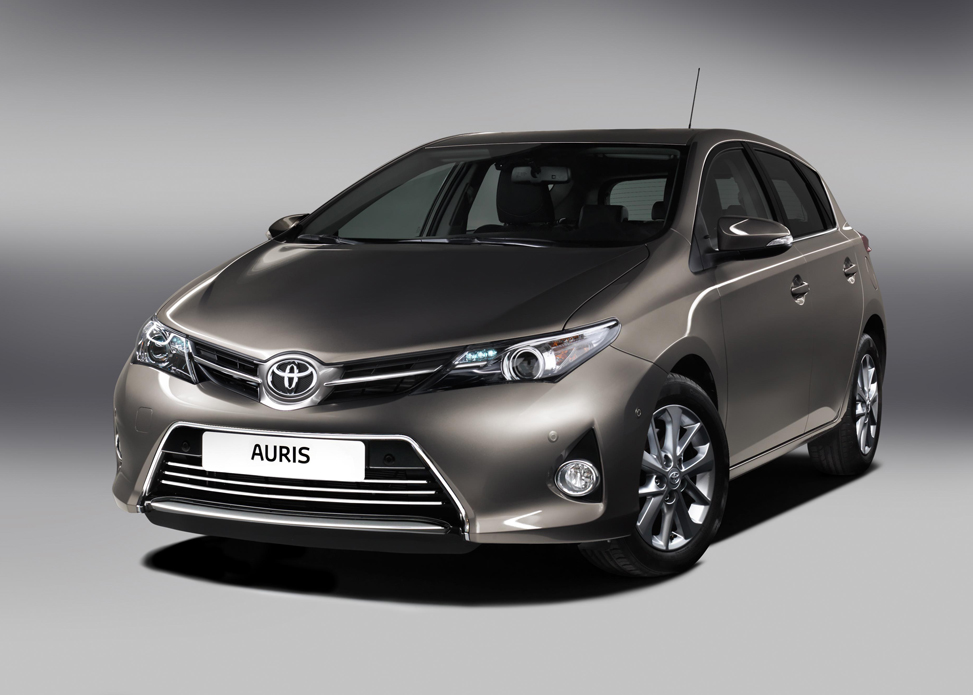The Clarkson review: Toyota Corolla (Auris) GX
Clarkson
Qualifying for last weekend’s Australian Grand Prix, the first race in the Formula One calendar, was to be held in the middle of the night. But that was just fine by me because I had big, saucer-eyed, loneliness-of-the- night jet lag.
Annoyingly, though, the start of the action was delayed because of rain. And then it was delayed some more, and then a lot more. And then it was abandoned. Various serious-faced men in short-sleeved shirts came on the television to explain that there was standing water on the track, and on Twitter all sorts of people were sympathising with the decision because it’s dangerous to drive a car into a puddle at 160mph. They’re right. It is.
Search for and buy a Toyota Corolla on driving.co.uk
But here’s the point that everyone missed. The drivers would not be forced to drive into a puddle at 160mph. Some would, and of those a few would spin and crash in an exciting explosion of noise and carbon fibre. Others would choose to slow down. So the puddles would, in fact, be a test of the driver’s bravery. And isn’t that why we watch?
Well, it was in the olden days, when the men who took part wanted to win at all costs because then they’d get more sex. They’d bash wheels and do four-wheel drifts and as often as not they were still nursing a hangover from the night before. It was all very excellent.
Now, though, the sport is run by people who don’t really think it’s a sport at all. They think it’s a science. And they don’t want to run their aerodynamically honed, electronically measured instruments through a puddle, any more than the boffins at Cern would want to study their Higgs boson in a children’s ball pool.
For these people the cars are not cars at all. They are carefully considered probes into the world of advanced maths and the laws of physics. And the drivers? Robots, really, programmed to do as they’re told. Sky Sports interviewed the five rookies who this year have joined what’s laughably called “the circus”. And they were like FIA puppets, saying exactly what they’d been programmed to say by someone in a branded shirt. Dead people would be more interesting.
I like to think that if I’d been one of them, sitting in my pit in Australia, and I’d been told that someone in the health and safety vehicle had abandoned the qualifying session, I’d have fired up my car and driven round the track in a roar of barely contained power-sliding fury to show that they were talking nonsense.
Occasionally you hear about a driver insisting a race should be stopped because of bad weather — Alain Prost in Monaco and Niki Lauda in Japan — but for the most part, and in private, they’d be happy to race even if it was snowing. Quite right too. It’s the men in the monogrammed headphones. The geeks with the laptops. And the finger-wagging stewards. They’re the killjoys who are turning F1 into a dreary blend of computer science, corporate public relations and cricket.
When we watch an F1 event, we crave the merest hint of humanity or passion or emotion. But instead it’s Martin Whitmarsh’s hair and those shudderingly awful branded shirts and all the lorries parked exactly in line. It’s a televised obsessive-compulsive disorder.
I wish I ran a team. I’d turn up late and a bit drunk. I’d park my lorry at an angle and send out a car with a giant cock and balls painted on the side. I’d goose the drivers’ girlfriends, over the radio, while they were racing, and if I won, I’d run up and down the pit lane making the loser sign at Christian Horner.
But that’s the trouble. I wouldn’t win. My cars would break down and explode and come last. And I’d be a laughing stock. And that, of course, brings me to the Toyota Corolla.
This has more in common with an F1 racer than any other car on the market because it too was built without emotion or passion. It was built only to be logical and ordered, and as a result it has been humongously successful.
Ford shifted more than 15m Model Ts. Volkswagen smashed that record with its original Beetle, which sold more than 21m. But those are Zager & Evans compared with Toyota, which, to date, has sold about 40m Corollas. This means there are more of them in the world than there are Canadians.
Except, of course, there aren’t. Toyota makes Corollas that don’t last for ever. After a period of time — let’s say about eight years — they are likely to implode and their owners will have to buy a replacement.
I suppose I should point out that in Britain today the Corolla is actually sold as the Auris. No idea why. Seems to me like Apple changing its name to Pazizzle. But I was interested to find out what it might be like driving around in a car that was deliberately designed to be as uninteresting as possible.
It’s so uninteresting that on the whole of the worldwide web there is not a single review of this car. Not one. You can read about Koenigseggs and Gilbern Invaders and the Peel P50. But not a single journalist has thought, “Hmmm. I wonder what the world’s bestselling car is like.”
Well, let me tell you here and now that it is extremely uninteresting because you know when you turn the key, the starter motor will whirr and the 1.8-litre engine will fire up. You know that if you turn the wheel, the car will go round the corner, and that if you press the middle pedal, it will slow down.
It handles well. It rides well. It is about as economical as you could reasonably expect and . . . I’m struggling to stay awake here.
You think a Volkswagen Golf is reliable and predictable? Well, I laugh in your face. A Golf is an offbeat German art-house film featuring laughing clowns and naked women fighting with deranged crows. Whereas an Auris is a glass of tap water.
However, there is one thing. The model I drove had a continuously variable transmission. Baffled? Let’s see if I can help. Imagine the gears on the back wheel of your racing bicycle. There are five cogs, yes? Well, think of CVT as a cone. This means there’s just one gear with an infinite number of ratios. Sounds great. It isn’t.
Because when you put your foot down to accelerate away from a junction, the revs rise first and then your speed increases to match them. The noise is terrible. It sounds as though there’s a wounded cow under the bonnet.
And on the Auris I drove — which was badged as a Corolla because I was in New Zealand and it’s still 1952 there — a Sport button had been fitted. This meant the cone now had steps, as with a normal gearbox. Which rendered it not just unpleasant and noisy but useless too.
I was very grateful for this feature, though, because on a 12-hour drive it gave me something to think about, something to hate. And that kept me alive. If I’d been driving a version with a normal manual or a traditional automatic, I’d have done what I do after 10 minutes of the lights going out in an F1 race. Fallen into a deep and dreamless sleep.
I’m not saying you shouldn’t buy an Auris. That would be silly. But if you are a driving enthusiast, and you find yourself in such a thing, you will be enraged by the scientific approach. You’ll desperately want it to do something — anything — out of the ordinary. Something excellent or mad or bad.
In the same way as when you watch an F1 race you hanker after the days when the drivers had oil on their faces, wore chinos and didn’t sit in the bloody pits all day because it was a bit rainy.
Verdict ★★☆☆☆
Can 40m people be wrong? Yes
Factfile
Toyota Corolla GX (aka the Auris but GX model not sold in UK)
- Price:
- NZ$34,900 (£19,103)
- Engine:
- 1797cc, 4 cylinders
- Power:
- 138bhp @ 6400rpm
- Transmission:
- continuously variable transmission
- Acceleration:
- 0-62mph: 10sec
- Top Speed:
- not available
- Fuel:
- 43mpg (combined)
- CO2:
- 152g/km
- Road Tax Band:
- £170 a year
- Dimensions:
- L 4275mm W 1760mm H 1460mm
Search for and buy a Toyota Corolla on driving.co.uk






